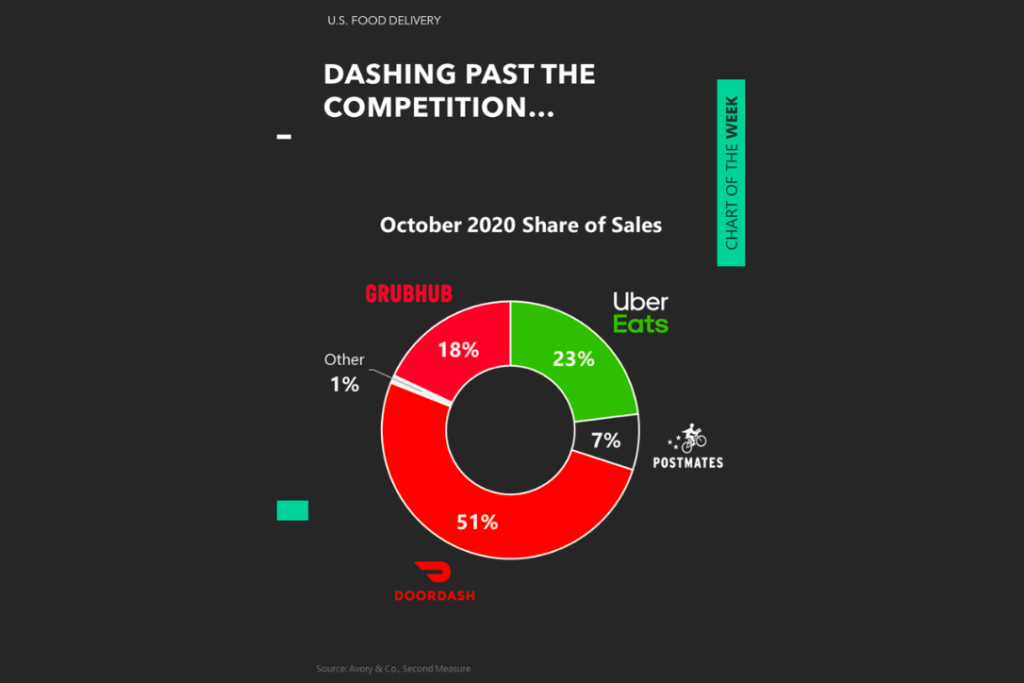“Innovation works best when there’s a problem to solve.” – Matt Maloney
Pizza has long dominated the food delivery scene, comprising a large share of the pie. For other restaurants, there were friction points in getting food from the kitchen to the consumer.
Today, food delivery platforms have lowered barriers to entry and enabled even the smallest of businesses to compete. The food delivery industry is paced by leader DoorDash.
Although the landscape continues to evolve, in October of this year the leading platform was DoorDash (DASH) claiming a 51% share of sales. Uber Eats came in second with 23%, followed by Grubhub with 18% and Postmates with 7%.

Monitoring The Landscape
As part of my investment discovery process, I are constantly monitoring companies new to public markets. This past week we witnessed the IPO of DoorDash, which gained the attention of many public investors as well.
Food delivery has notably been a difficult area to address. Not only is the logistics issue hard to solve, but there are additional variables that must be accounted for (e.g. keeping food warm). On top of that, the space is filled with competitors willing to absorb discounts from promotional campaigns adding headwinds to profitability.
Companies like DoorDash have also expressed an interest in expanding beyond food and into other retail categories, which can change the competitive landscape altogether.
It’s interesting to think of how long the food delivery war can persist, and what the landscape will look like once the dust settles.
Twitter: @_SeanDavid
The author or his firm have positions in mentioned securities at the time of publication. Any opinions expressed herein are solely those of the author, and do not in any way represent the views or opinions of any other person or entity.







